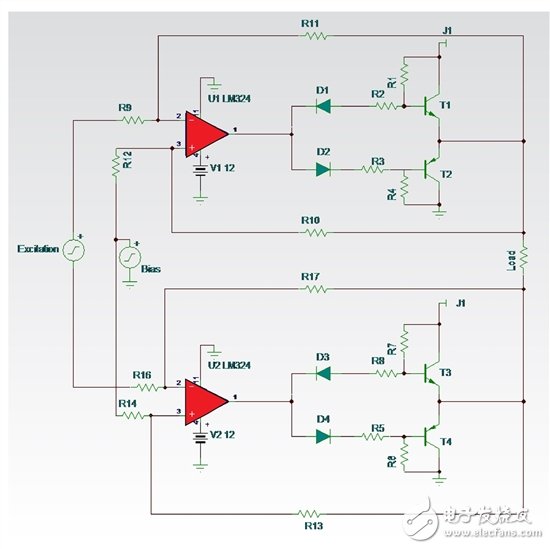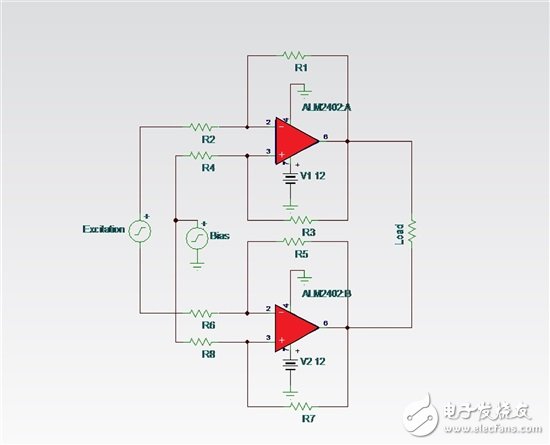Usually, when defining a new device to meet strict automotive standards, our team will look at other systems that require the same functionality, and we will design devices that span all these applications. This is exactly what happened when our team developed the new ALM2402, a dual high-current operational amplifier (op amp) designed for automotive applications. When defining ALM2402, we realized that many automotive and industrial systems require an op amp that can drive high-current capacitive or inductive loads. In the past, designers were often required to use discrete components to meet this need. To design a simple high-current amplifier with discrete components, you need an amplifier, a bipolar junction transistor (BJT), and a diode. Figure 1 shows an example of this, usually used in motor drive applications. This embodiment can drive the excitation coil of the resolver (used to measure the rotation angle of the motor shaft). You can find amplifier designs in many automotive and industrial applications (such as driving inductive loads). This typical solution poses challenges for designers in terms of board space and output transistor bias. In addition, additional circuits need to be provided to realize the overcurrent protection function, which increases the space challenge of discrete implementations. Without the overcurrent protection function, the system will become "dumb". If there is no protection function, the power supply will continue to burn. Figure 1 : Discrete implementation of driving the excitation coil For comparison, let's look at the ALM2402 implementation shown in Figure 2 for driving the excitation coil. Very simple, right? Without the need for external transistor bias, ALM2402 can drive up to 400mA of current through each channel. The circuit is small in size and placed in a 3mm × 3mm DRR package, allowing designers to minimize the size of their overall solution. Figure 2: Excitation coil driver using ALM2402-Q1 In high-current drive applications, protection functions are a key requirement. ALM2402 integrates multiple system protection functions, including the following items: Integrated overcurrent protection function Output to battery short-circuit function, applicable situation: when a series diode is connected from the battery to the power supply pin of the device. The over-temperature protection function can shut down the device. Applicable situation: When the layout is wrong or the ambient temperature in the system exceeds the regulation. In addition, the marking pins of the device have a convenient function for multiple purposes. When the over-temperature events, Chi marker pin goes low, thereby allowing the user to design a feedback mechanism to turn off the system. These can also pull down the flag pin from the outside to turn off the op amp and put the op amp into sleep mode, consuming very little current. This feature is very useful for battery applications where power consumption is critical. USB 3.0 is the future and the new generation in transmission tech, with the following advantages: Super speed – It`s 10 times faster than its predecessor and backward compatible with all USB 2.0 interfaces. It uses a 9-pin connector with 4 pins compatible with USB 2.0 and another 5 pins for bi-directional data transfer. Usb 3.0 Cable,Usb3 Cable,3.0 Usb Port,Micro Usb 3.0 Cable UCOAX , https://www.ucoax.com

External Differences
The USB 3.0 connector is blue.
The top 5 pins provide the two-way data transfer.
The bottom 4 pins provide backward compatibility with USB 2.0.
Note: All USB 3.0 Interfaces are blue